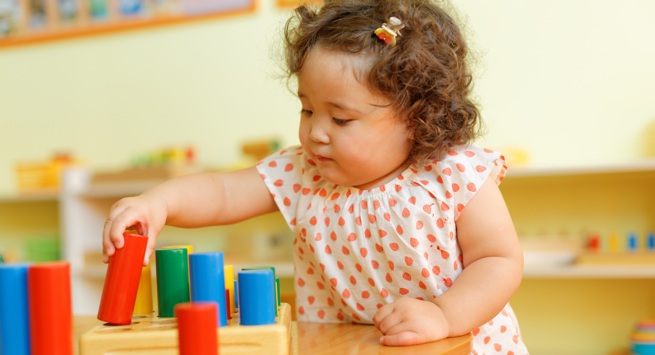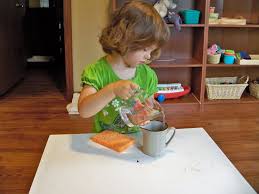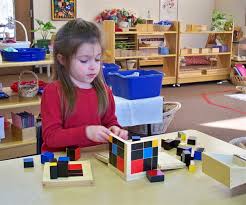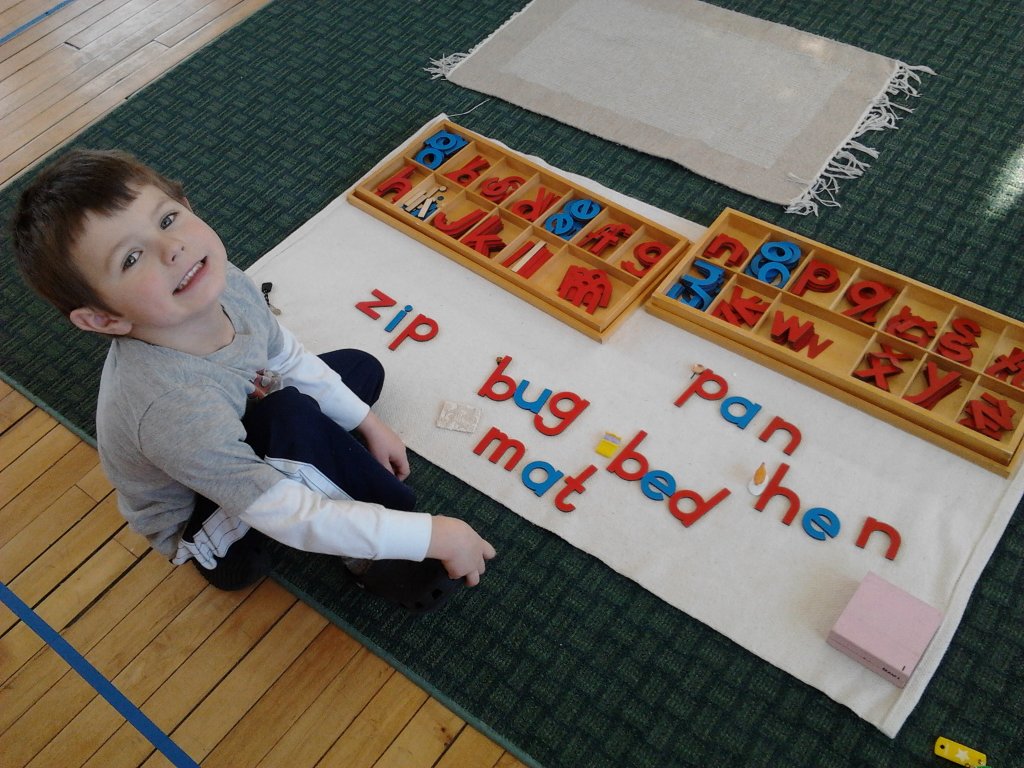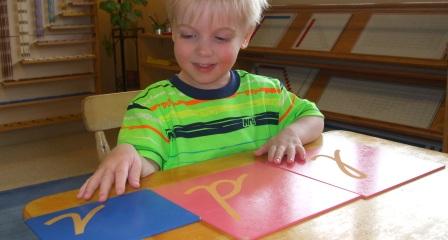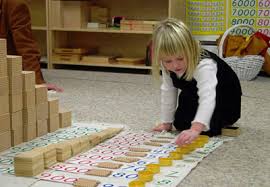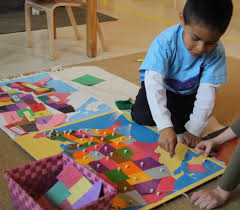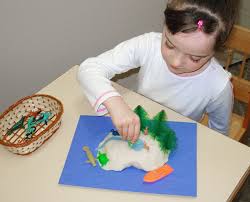Math Activities in Montessori Education
Introduction to Montessori Mathematics
Mathematical and number concepts are an essential part of everyday life. Even before starting school, young children are exposed to numbers and mathematical concepts daily (e.g. sorting, counting, estimating quantity, measuring), through television, through books, when shopping, and through many different kinds of infant toys as well as in our daily activities. For example, setting the table or putting on shoes develops the idea of one-to-one correspondence, because there must be a place for each person, or a shoe for each foot. Packing away clothes or shopping is an exercise in classification and sorting, and helping with baking gives the young child experience in measurement and estimation as well as the experience of working with volumes or mass in different types of media (e.g. flour and oil). Counting is often introduced directly in educational television programs, books for young children or number rhymes and games.
The study of mathematics, however, is more than simply the achievement of mathematical skills. Pure mathematics is the study of patterns, structure and relationships. It is the ultimate abstraction, where the rules governing interactions are the object of study. The “things” on which the rules operate become immaterial. Maria Montessori said that it is the the mind’s power of abstraction, that, with imagination, goes beyond the simple perception of things, so that the two powers “play a mutual part in the construction of the mind’s content.” (M Montessori, The Absorbent Mind)
Maria Montessori referred to the part of the mind that deals with order and abstraction and is precisely and logically constructed as “the mathematical mind”. This part of the mind is vitally important, as it allows the child to order and thus understand his world. Because of the ordered and logical nature of mathematics, the study of mathematics provides intellectual training for precise and rigorous thought, as well as helping to develop the mathematical mind.
Principles of Mathematics in Montessori
Before the child can construct number concepts in his mind, other concepts must be well internalized and understood. Three important principles that are essential for mathematical understanding are:
Conservation: This implies understanding that two equal things remain equal even if their appearance is altered, or their spatial arrangement changed, as long as nothing is added or taken away. This principle applies to number, length, liquid, mass or substance, weight, area and volume. The understanding of different conservation principles is achieved at different times in a child’s life, with number conservation, essential for the understanding of early mathematics, developing first, and the understanding of volume conservation usually developing last.
Reversibility: This involves understanding that an action or operation can be undone, or done in the opposite direction so as to relate back to the original situation e.g. when water is poured from a long, thin glass into a short, thick glass, it can be poured back into the original glass and then the original situation is restored. The understanding of conservation and reversibility is linked – a child who cannot imagine a situation being reversed cannot understand conservation, and a child who does not understand conservation will not be able to relate a changed situation back to the original one.
One to One Correspondence: This describes the process of pairing each member of one set to each member of another set and is an essential part of understanding number. Children need to understand that each number word must be said for one item only, and that each item must be paired with a number word. Children develop an understanding of this principle through repeated practise. They need lots of opportunities to touch or move things while counting them (e.g. plates at mealtimes, boys or girls at school) in order to prevent them from merely reciting the number words in a meaningless way. Understanding one-to-one correspondence allows the child to consider the relationships of “more than”, “less than” and “as many as” without needing to count the objects under consideration. (These are also known as ordinal relations. Ordinality refers to the relationship or order of numbers to each other, including positional relationships like 1st, 2nd etc.)
How is Mathematics learned in the Montessori classroom?
Maria Montessori’s first intellectual love was mathematics. As a young teenager, she studied mathematics at an all-boy technical school, in preparation for studying engineering. In order to facilitate the learning of mathematical and number concepts, she designed a system of precise, logically ordered, didactic equipment that is used in the preschool mathematics area. Together with the sensorial equipment, these beautiful materials form one of the more striking physical features of the Montessori preschool classroom.
The didactic material and the associated activities provide the child with a concrete and dynamic impression of the mathematical concepts presented. As with all the Montessori activities, movement is an integral part of learning. The child uses his hands and body while working with the materials. He combines, shares, counts and compares. He learns by doing, and by self-discovery. All materials contain a built-in control of error that guides the child towards doing the activity correctly, and allows the child to work independently of adult guidance, leading to true self-discovery and self-education. Through the use and manipulation of these concrete materials, the young child absorbs a visual and muscular impression of quantity and order. He discovers rules and patterns as he gradually progresses from concrete objects to the symbolic representation of number.
Groups of Montessori Mathematical Exercises
Group 1: Numbers through Ten
Group 2: Decimal System
Group 3: Counting beyond Ten
Group 5: Passage to Abstraction
Group 6: Fractions
Number Rods Exercise
